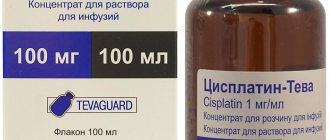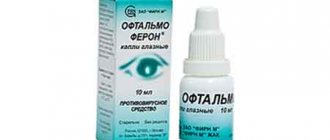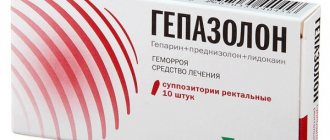Instructions for use
The scheme for using Ondansetron involves some nuances. Detailed recommendations for the use of the drug are given in the instructions. The manufacturer describes approximate dosages, but in most cases the dosage regimen is compiled individually. Separate paragraphs indicate indications, age restrictions, contraindications and other important nuances that must be taken into account before therapy. Particular attention should be paid to the section describing drug interactions and special instructions.
pharmachologic effect
The antiemetic effect of Ondansetron is due to the content of ondansetron in the drug. The substance acts on the emetic link, relieves the symptoms of nausea and prevents vomiting. Additionally, the drug increases the protective functions of the digestive tract and normalizes the functioning of some parts of the nervous system. Taking Ondansetron can alleviate the condition of patients during procedures that may result in a gag reflex.
The drug can be used before surgery or chemotherapy, as well as at any stage if nausea occurs.
Pharmacological properties:
- stimulation of afferent fibers of the vagus nerve;
- inhibition of the central parts of the gag reflex;
- normalization of serotonin levels.
Indications for use
- For intravenous, intramuscular administration, oral administration. Treatment and prevention of vomiting and nausea caused by radiation therapy and cytostatic chemotherapy in adults; treatment and prevention of vomiting and nausea caused by cytostatic chemotherapy in children; treatment and prevention of postoperative vomiting and nausea in patients of all ages.
- For rectal use. Treatment and prevention of vomiting and nausea caused by radiation therapy and cytostatic chemotherapy.
Mode of application
Solution for intravenous, intramuscular administration
The drug is administered intramuscularly and by infusion (intravenously). Initially, for radiation therapy and emetogenic chemotherapy, adults are prescribed: 8 mg, intravenously once before the start of the course and again after 8-12 hours;
adolescents over 12 years of age and adults can be administered infusion over 15 minutes - 32 mg half an hour before the start of the course once or 3 times 0.15 mg/kg - half an hour before the start of chemotherapy, then 5 and 8 hours later.
Pills
Radiation therapy and moderate emetogenic chemotherapy
Children over 12 and adults: 8 mg 60-120 minutes before the start of therapy, then another 8 mg 8-12 hours later.
To prevent prolonged or late vomiting and nausea after the first day, it is recommended to continue the use of Ondansetron at 8 mg every 12 hours.
When irradiating the abdominal area (partial high-dose), the drug is taken every 8 hours, 8 mg. Ondansetron is taken throughout the course of therapy, as well as for several days (from 1 to 5) after its completion.
Chemotherapy is highly emetogenic
Children over 12 and adults: 24 mg of the drug orally (together with dexamethasone phosphate) before starting chemotherapy, 1-2 hours before it.
In the following days (to prevent late vomiting), 2 mg twice a day during the course of chemotherapy and 5 days after its completion.
For children 4-12 years old, chemotherapy is prescribed: first, 4 mg three times a day (half an hour before the start of the course, again after 4 and 8 hours). To prevent late vomiting, take the drug 4 mg for 1-2 days every 8 hours, then 4 mg twice a day during the course and 5 days after its completion.
Release form, composition
The drug is available in the form of an injection solution and in the form of tablets. The active ingredient is ondansetron.
Interaction with other drugs
Caution is required when using the drug simultaneously with inducers of CYP3A, CYP2D6 enzymes - carisoprodol, barbiturates, tolbutamide, dinitrogen oxide, rifampicin, carbamazepine, phenylbutazone, glutethimide, phenytoin, griseofulvin, phenylbutazone, papaverine;
with inhibitors of CYP3A, CYP2D6 enzymes - verapamil, allopurinol, quinidine, macrolide antibiotics, propranolol, antidepressants (MAO inhibitors), omeprazole, estrogen-containing oral contraceptives, chloramphenicol, quinine, cimetidine, metronidazole, diltiazem, lovastatin, ketoconazole, disulfiram, from oniazide, valproic acid and its salts, fluoroquinolones, fluconazole, erythromycin.
Caution must be exercised when taking the drug with drugs that cause water-electrolyte imbalance, reduce heart rate, and prolong the QT interval.
Pharmacological properties of the drug Ondansetron
Antiemetic agent, 5HT3 receptor antagonist. The antiemetic effect of ondansetron is due to its action on 5HT3 receptors in peripheral neurons and the central nervous system. Ondansetron has a sedative effect and does not cause changes in the concentration of prolactin in the blood plasma. The bioavailability of ondansetron after oral administration is 60%. It is actively metabolized in the body, metabolites are excreted in feces and urine. After oral administration, the maximum concentration is reached after 1.6 hours. The half-life is 3 hours; in elderly people - up to 5 hours. Binding to blood plasma proteins - 70–76%.
Side effects
| Possible adverse reactions | |
| The immune system | hypersensitivity (immediate type reactions) – angioedema, bronchospasm, urticaria, laryngospasm. |
| The cardiovascular system | feeling of heat; bradycardia, chest pain (not accompanied and accompanied by a decrease in the ST segment), arrhythmia, decreased blood pressure; prolongation of the QT interval (including bidirectional ventricular tachycardia). |
| Gastrointestinal tract | constipation |
| Mediastinum, chest organs, respiratory system | hiccups |
| Skin and subcutaneous tissues | toxic skin rash, incl. toxic epidermal necrolysis. |
| Organs of vision | transient visual disturbances (blurred vision), especially with intravenous administration; transient blindness, especially with intravenous administration. In most cases, vision was restored within 20 minutes. |
| Local and general reactions | burning in the area of the rectum and anus when inserting a suppository; burning at the injection site |
| Biliary tract, liver | increase in the level of liver enzymes AST, ALT asymptomatic (was noticed in patients receiving chemotherapy with cisplatin). |
| Nervous system | headaches; movement disorders (including extrapyramidal symptoms - oculogyric crisis (gaze spasms), dystonia, dyskinesia); convulsions; rarely - dizziness, especially with rapid intravenous administration. |
| Other | diarrhea, dry mouth, hypokalemia. |
Overdose
Exceeding dosages of Ondansetron provokes serious side symptoms. There is no specific antidote to eliminate the negative reaction of the body. Treatment is carried out based on the symptoms that appear. Some deviations may occur in laboratory test results. If an overdose leads to a critical condition of the patient, then further use of the drug may be prohibited.
Contraindications
- For oral administration. Hypersensitivity; congenital long QT syndrome; pregnancy (tablets are contraindicated in the first trimester); children's age (tablets - up to 2 years, syrup - up to 6 months, dosage 4 mg - up to 3 years, dosage 8 mg - up to 12 years); lactation; combined use with apomorphine.
- For intramuscular, intravenous administration. Hypersensitivity; congenital long QT syndrome; combined use with apomorphine; lactation period; pregnancy; age up to 6 months (treatment, prevention of vomiting and nausea caused by cytostatic chemotherapy); age up to 1 month (treatment, prevention of postoperative vomiting, nausea).
- For rectal use. Hypersensitivity; children's age; breastfeeding period; combined use with apomorphine; congenital long QT syndrome; liver failure; pregnancy.
During pregnancy
Ondansetron should not be used during pregnancy. For tablets, the contraindication is limited to the first trimester. If the use of the drug is necessary during lactation, breastfeeding should be stopped during treatment.
Drug interactions Ondansetron
Ondansetron can be administered by intravenous infusion at a rate of 1 mg/hour. The following drugs can be administered through a Y-shaped catheter along with ondansetron at concentrations ranging from 16 to 160 mcg/mL (for example, 8 mg/500 mL and 8 mg/50 mL, respectively):
- cisplatin at concentrations up to 0.48 mg/ml (for example, 240 mg in 500 ml), administered over 1–8 hours;
- fluorouracil at a concentration of up to 0.8 mg/ml (for example, 2.4 g in 3000 ml or 400 mg in 500 ml), administered at a rate of at least 20 ml/h (500 ml in 24 hours); higher concentrations of fluorouracil may cause precipitation of ondansetron;
- carboplatin at a concentration of 0.18–9.9 mg/ml (for example, 90 mg in 500 ml or 900 mg in 100 ml), administered over 10 minutes to 1 hour;
- etoposide at a concentration of 0.14–0.25 mg/ml (eg, 72 mg in 500 ml to 250 mg in 1000 ml), administered over 0.5–1 hour.
- ceftazidime at a dose of 0.025–2 g in aqueous solution (for example, 250 mg in 2.5 ml or 2 g in 10 ml), administered intravenously as a bolus over 5 minutes;
- cyclophosphamide at a dose of 0.1–1 g in water for injection (5 ml per 100 mg), administered intravenously as a bolus over 5 minutes;
- dexamethasone at a dose of 20 mg IV slowly over 2–5 minutes through a Y-shaped catheter together with 8 or 32 mg of ondansetron in 50–100 ml of solution.
special instructions
Impact on the ability to drive vehicles and operate machinery
Ondansetron does not provoke disturbances in psychomotor reactions, but in case of an overdose, the body's reaction can be unpredictable. If your condition worsens, headaches appear, or changes in visual acuity, you should refrain from driving. Operating dangerous mechanisms with side symptoms will pose a threat to life.
Pregnancy and lactation
Ondansetron should not be used in the first trimester of pregnancy. At other stages of gestation, the drug can be prescribed in emergency cases (such a procedure is dangerous for the unborn child). The lactation period is included in the list of contraindications for the use of Ondansetron.
Use in childhood
In pediatrics, Ondansetron is approved for use from the age of two.
For impaired renal function
If renal dysfunction is detected, it is recommended to control the dosage of the drug (the daily dose is limited to 8 mg).
For liver dysfunction
There are no liver pathologists in the list of contraindications, but the manufacturer recommends adjusting the dosage regimen (the daily dosage is limited to 8 mg of the drug).
Conditions for dispensing from pharmacies
Recipe required.
Compound
active ingredient:
ondansetron;
1 tablet contains ondansetron hydrochloride dihydrate in terms of ondansetron 4 mg or 8 mg;
Excipients:
lactose monohydrate, microcrystalline cellulose, hypromellose, magnesium stearate, pregelatinized starch, titanium dioxide (E 171), glycerol triacetate.
Dosage form.
Film-coated tablets.
Basic physical and chemical properties:
Film-coated tablets are white or almost white in color, the upper and lower surfaces of which are convex. At the fracture, when viewed under a magnifying glass, a core is visible, surrounded by one continuous layer.
Pharmacotherapeutic group.
Antiemetics and anti-nausea medications. Serotonin 5HT3 receptor antagonists. Ondansetron.
ATX code A04A A01.
Contraindications
Hypersensitivity to the components of the drug and to other selective antagonists of 5HT3 serotonin receptors.
Severe liver dysfunction, abdominal surgery.
The use of ondansetron together with apomorphine is contraindicated, since cases of severe arterial hypotension and loss of consciousness have been observed with their combined use.
Interaction with other drugs and other types of interactions.
Special studies have shown that ondansetron does not interact with alcohol, temazepam, furosemide, tramadol or propofol.
Ondansetron is metabolized by various liver cytochrome P450 enzymes: CYP3A4, CYP2D6 and CYP1A2.
Due to the diversity of ondansetron metabolic enzymes, inhibition or reduction in the activity of one of them (for example, genetic deficiency of CYP2D6) under normal conditions is compensated by other enzymes and will have no effect or effect on the overall creatinine clearance will be insignificant, however, despite the diversity of metabolic enzymes in patients receiving CYP3A4 inducers (i.e. phenytoin, carbamazepine and rifampicin), an increase in the clearance of ondansetron taken orally and a decrease in its plasma concentration were noted.
Medicines that prolong the QTc interval
. In case of simultaneous use of ondansetron with other drugs that prolong the QTc interval, the expected therapeutic effect must be carefully weighed against the potential risk.
The following list provides examples of medications associated with QTc prolongation and/or torsade de pointes.
Among the listed pharmacological drugs, not all drugs are necessarily associated with prolongation of the QTc interval and/or
“torsade de pointes”:
- class IA, antiarrhythmics (quinidine, procainamide, disopyramide);
- class III, antiarrhythmics (amiodarone, sotalol, ibutilide, dronedarone);
- class 1C, antiarrhythmic (flecainide, propafenone);
- antiemetics (dolasetron, droperidol, chlorpromazine, prochlorperazine);
- tyrosine kinase inhibitors (vandetanib, sunitinib, nilotinib, lapatinib);
- antipsychotic drugs (chlorpromazine, pimozide, haloperidol, ziprasidone);
- antidepressants (citalopram, fluoxetine, venlafaxine, tricyclic/tetracyclic antidepressants such as amitriptyline, imipramine, maprotiline);
- opioids (methadone);
- domperidone;
- macrolide antibiotics and analogues (erythromycin, clarithromycin, telithromycin, tacrolimus);
- antibiotics of the quinolone class (moxifloxacin, levofloxacin, ciprofloxacin);
- antimalarials (quinine, chloroquine);
- azole antifungals (ketoconazole, fluconazole, voriconazole);
- histone deacetylase inhibitors (vorinostat);
- β2-adrenergic receptor agonists (salmeterol, formoterol).
Drugs that cause electrolyte imbalance
. Concomitant use of ondansetron with drugs that may disrupt electrolyte balance should be avoided. Examples of such medicines:
- loop, thiazide and thiazide-like diuretics;
- conveyances and enemas;
- amphotericin B;
- high doses of corticosteroids.
The above lists of potentially interacting drugs are not exhaustive. It is necessary to monitor current sources of information to identify new drugs that prolong the QTc interval or cause electrolyte abnormalities.
Tramadol
. According to a small number of clinical studies, ondansetron may reduce the analgesic effect of tramadol.
Apomorphine
. The use of ondansetron with apomorphine hydrochloride is contraindicated as cases of severe hypotension and loss of consciousness have been observed during co-administration (see section "Contraindications").
Serotonergic drugs
.
As with other serotonergic agents, serotonin syndrome, a potentially life-threatening condition, may occur when the antiemetic serotonin 5HT3 receptor antagonist is used in combination with other drugs that may affect the serotonergic neurotransmitter system (including triptans, selective serotonin reuptake inhibitors (SSRIs), serotonin and norepinephrine reuptake inhibitors (SNRIs), lithium, sibutramine, fentanyl and its analogues, dextromethorphan, tramadol, tapentadol, meperidine, methadone and pertazocine or St. John's wort ( Hypericum perforatum
)), as well as with drugs that reduce serotonin metabolism (such as MAO inhibitors, including linezolid (an antibiotic that is a reversible non-selective MAO inhibitor) and methylene blue) (see section "Peculiarities of use").
Side effects
On the side of the immune system:
hypersensitivity reactions of the nongain type, as severe as anaphylaxis.
On the side of the nervous system:
headache; cerebrovascular accidents, respiratory disorders (including extraparamidal reactions such as oculogical crisis, dystonic reactions and dyskinesia without persistent clinical effects); Confusion is important during the hour of rapid intravenous administration of the drug.
From the side of the organs:
imminent health disorders (blurred vision), the main concern under the hour of internal administration; past blindness, head rank under the hour of internal stagnation. In most cases, blindness lasts for 20 minutes.
On the side of the heart:
arrhythmias, chest pain (with or without ST segment depression), bradycardia;
prolongation of the QT interval (including three-dimensional/long-term squatting (Torsade de Pointes))
.
From the side of the vessel:
from the heat or tides; hypotension.
On the side of the respiratory system and thoracic organs:
geek.
On the side of the grass tract:
constipation.
On the side of the hepatobiliary system:
asymptomatic changes in liver function indicators. These episodes are avoided with caution in patients who are treated with chemotherapy drugs that replace cisplatin.
There have been reports of episodes of liver failure in patients with cancer, which were treated with concomitant treatment, including potentially hepatocytotoxic chemotherapy and antibiotics.
From the side of the skin and under the skin:
toxic symptoms, including toxic epidermal necrolysis.
Zagalni discord:
Local reactions in patients undergoing internal administration.
These adverse reactions were reported following post-dose precautions.
On the side of the cardiovascular system:
Also, discomfort in the chest, extrasystoles, tachycardia, including schular and supra-schular tachycardia, atrial fibrillation, palpitations, syncope, change the ECG.
Hypersensitivity reactions:
anaphylactic reactions, angioedema, bronchospasm, anaphylactic shock, itching, scalp viscera, urticaria.
On the side of the nervous system:
impaired walking, chorea, myoclonus, lack of mobility, liver pain, tongue protrusion, diplopia, paresthesia.
Secular disturbances and local reactions:
Increased body temperature, pain, redness, liver at the injection site.
Inshe:
hypokalemia.







